
The Brahmanda Purana: 5 Volumes
Book Specification
| Item Code: | IDF069 |
| Author: | Translated and Annotated By: Dr. G.V. Tagare |
| Publisher: | MOTILAL BANARSIDASS PUBLISHERS PVT. LTD. |
| Language: | English Translation |
| ISBN: | Vol I 812080354X; Vol II 8120803558; Vol III 8120803566; Vol IV 8120803574; Vol V 8120803582; |
| Pages: | 1548 |
| Cover: | Hardcover |
| Other Details | 8.8" X 5.7" |
| Weight | 2.36 kg |
Book Description
The present volume contains the Brahmat1da Purana, Part I (Chapters 1-38) completing the first-two sections (Prakriya and Anuanga) of the text in English Translation. This is the Twenty-second volume in the series which we have planned on Ancient Indian Tradition and Mythology.
The project of the Series was envisaged and financed in 1970 by Lab Sundar Lal Jam of Messrs Motilal Banarsidass. Hitherto twenty one volumes of the Series (comprising English translation of Siva, Linga, Bhagavata, Garuda, Narada and Kurma Puranas) have been published and released for sale.
This Purana, like all other Purãnas, is encyclopedic in character. It deals with miscellaneous topics such as Cosmogony, Religion, Philosophy History, Geography and Astronomy. It is called Brahmanda since it gives explanation of the real state of affairs about the universe. It is divided into four sections Prakriya, Anusanga, Upodghata and Upasarithara. It is accompanied by LalitcY-Mahatmya (the glorification of the Goddess Lalita) in 40 chapters.
The present volume consists of two Sections viz. Prakriya and Anusanga. Section 1 Prakriya consists of five chapters which deal with the creation of the universe in the light of the Vedic metaphysics which it expounds in detail in the Purãnic manner. This section describes the original state of equilibrium of gunas (qualities), the laying of the Golden Egg, the emergence of the creator lord Brahma from it. The second section Anasanga, which this volume includes, contains 33 chapters (6-38). It is a connected continuation of the theme of Prakriya pada inasmuch as it recounts the account of the birth as well as the genealogies of Brahmarsis (Brahmanical sages), Devaris (Celestial sages) and Rajanis (Royal sages). The two sections which complete this volume illustrate the two characteristics of a Mah4urasia viz., Sarga (Creation) and Vathia (genealogy), although the latter trait is resumed in the third section, namely the Upodghata of the next volume.
The aim of this series is to universalize knowledge through the most popular international medium of expression namely English. Old Sanskrit text has been rendered into English as precisely as possible. The translation is based on the standard edition of the Venkatesvara press. The test is well edited still it presents problems hard to be overcome by mere translation. The need of annotations is evident therefore. The learned translator has added ample materials in the footnotes which facilitate correct interpretation of the text. He has put elaborate comments in these notes on each and every problem of importance and discussed textual variations in the verses common in the preface. The comparative study of the Javanese text of Brahmanda Purana in Kavi Language with the Sanskrit text of the present Purana is a feature that shall be most welcomed by the reader.
We have included abbreviation in this part. They will be repeated in the succeeding parts too with such additions as are made in the notes of those parts. The General index will be appended to the last part.
The present volume contains the Brahmanda Purana, Part II (Chapters 1-43) of the third section, Upodghatapada, of the text in English Translation. This is the Twenty-third volume in the Series which we have planned on Ancient Indian Tradition and Mythology.
The project of the Series was envisaged and financed in 1970 by Lala Sundar Lal Jain of Messrs Motilal Banarsidass. Hitherto twenty two volumes of the Series (comprising English translation of Siva, Linga, Bhagavata Garuda, Narada, Kurma and Brahmanda Puranas) have been published and released for sale.
The text of this Purana is divided into 3 parts The preliminary (purva), the middle (madhya) and the concluding (uttara). The preliminary part consists of two sections namely Prakriya and Anutanga. The former consists of 5 chapters, the latter contains 33. The chapter Nos. of the 2 sections run serially. The middle part consists of section 3 named Upodghata. The serial nos. of chs. in this section start afresh with the nun- her I and end with the number 74. The final part (Uttarabhaga) consists of Section 4 named Upasamhara consisting of 4 chapters and an appendix named Lalitamshatmya (the Glorification of the Goddess Lalita) in 40 chapters. In this part too, the serial order of chapters begins with the fresh number. The division into parts—Pürva, Madhyama and Uttara—seems to be arbitrary. For instance, the middle part, though it start€ with the fresh number of chapters, continues the topic of the previous part right up to the chapter 8 of this pada.
The present volume contains the third section Upodghata (Chs. 1 to 43). The remaining cbs (44-74) of this section are treated in the next volume. Thus the third section Upodghdta has been split into 2 volumes. Chapters 1-10 of this section deal with the groups of sages such as Bhrgu, Angiras, Atri, and their progeny as well as the creation of Prajapatis and the race of Danu and others. Ch. 10 takes up additionally, the Dynasties of Pitrs, their propitiation by performing Sraddha. The Sraddha Kalpa consists of 11 chapters beginning with the 10th chapter and ending with the chapter 20. It states why Brahmanas are to be worshipped fed and gifted at the time of Sraddha and endorses the belief that pitrs enter the bodies of Brahmins in gaseous form. It describes the sraddha ritual in detail and provides the philosophical background thereof. Ch. 21 onwards deal with the narrative of Bhargava Parasurama and depict the history of Haihaya king Karittavirya known as Sahasrarjuna Chs. 32, 33 are very important as they depict the religious condition of the period when different sects of Indian religion had reached a compromise Brahma’s sending Parasurama to Siva to receive the knowledge of weaponty Siva’s granting parasurama the perfect missile effective of world conquest as well as the protective armour and 108 names o lord Krsna are the instances in point. Another remarkable feature of this section is the reference to Mrtasamjivani lore that revives the dead to life and which Bhrgu is said to possess.
We have included abbreviation in this part. They will be repeated in the succeeding parts too with such additions as are made in the notes of those parts. The General index will be appended to the last part.
The present volume contains the Brahmanda Purana, Part II (Chapters 1-43) of the third section, Upodghatapada, of the text in English Translation. This is the Twenty-third volume in the Series which we have planned on Ancient Indian Tradition and Mythology.
The project of the Series was envisaged and financed in 1970 by Lala Sundar Lal Jain of Messrs Motilal Banarsidass. Hitherto twenty two volumes of the Series (comprising English translation of Siva, Linga, Bhagavata Garuda, Narada, Kurma and Brahmanda Puranas) have been published and released for sale.
The present Volume continues the story of Parasuráma from the previous volume. It records the visit of Parasurama to the hermitage of his father Jamadagni and his review of the battle with king Kirttavirya ending in the latter’s death, his visit to lord Brahmã who advised him to see lord Siva who gave him the protective mantra Trailokya-Vijaya which he repeated for practice at the holy place named Puskara.
In the next visit to lord Siva Parasurama meets stiff resistance from Vinayaka, son of lord Siva. Vinayaka as a guard is posted at the gate. He would not allow Paraurama to enter the palace at that unusual hour. But in the excess of devotion for the lord, Paraurama can no longer wait and a furious combat ensues between Vinayaka and Parasurãma wherein the former loses his tusk.
Pãrvati is extremely in rage. She threatens to desert Siva if the insult is not avenged. All entreaties are of no avail till Rãdhã and Krsna arrive to intervene. Rãdha succeeds in appeasing Parvati. Thus, an unpleasant situation created by ugly incident is changed for the better. Such incidents are no main parts of the story. They appear to have been inserted later on for establishing harmony among the mutually opposing religious sects. The emergence of Radha as a powerful celebrity who could pacify Pãrvati when others had failed is, in fact, the most significant factor that has been introduced for accomplishing the religious integration of different sects.
As a part of the main story, Jamadagni episode presents persons of different character, Jamadagni, by nature, is a peace- loving sage. He is not happy at the cruel slaughter of innocent Ksatriyas. He advises Parasurama to perform penance for twelve years. Parasurama agrees to the proposa1 and starts penance at the mount Mahendra. Meanwhile, Sütra, son of Kãrttavirya, goes to the forest on hunting expedition. He enters the hermitage of Jamadagni and kills the sage. Resuka wife of Jamadagni, immolates herself on the pyre.
After completing his course of penance, Parasurama returns to the hermitage of his father. On knowing about the tragic death of his parents he is extremely pained. He goes to Mãhismati and kills Süra. Thereafter, he goes to the mount Mahendra and performs penance. Taking advantage of his absence, the Haihayas gather forces, devastate Bhärgavas and their allies. When Paraurama returns, he is informed of their activities. He repeats his expeditions twenty one times and slaughters Katriyas. He catches hold of twelve thousand katriya kings, kills them at Kurusketra, fills up five tanks with their blood and offers libations thereof to his deceased forefathers who, however, advise him to desist from violence. Parasurãma performs a horse-sacrifice, donates all conquered land as gift to his preceptor Kayapa.
The rise of the power of Haihayas known as Talajanghas shows that the effect of Rãma’s conquests was temporary. Tãlajañghas recovered their kingdom and drove out the ruler of Ayodhyã who due to blood-relation with Jamadagni was an ally of Paraurama.
Furthermore, the account shows that the sages were equipped with the knowledge of military science. For instance, king Sagara of Ayodhyã had received his military training under Aurva and attained proficiency in the fire missiles. As a result of this he had extended his dominion as far as Afghanistan. This volume contains the story of Sagara in detail, refers to his horse sacrifice wherein his progeny was destroyed by the fire of sage Kapila’s anger. There are references to Bhagiratha who had brought Ganga from the Himalayas to the northern plains of the country and sanctified the ashes of his ancestors with her holy waters.
The character of Paraurama is portrayed as militant, remorseless, aggressive revengeful and violent. His expeditions against the Haihayas, his conquests of the Earth repeated twenty one times, his filling up five tanks a Kurusketra with the blood of Katriya rulers show how far his fury had reached to avenge the death of his father. As for further accounts of his exploits, mention may be made of how he had recovered the submerged land from the sea.
Furthermore, the Section presents the account of some prominent royal dynasties front the birth of Vaivasvata Manu to the Future Savarna Manu. These accounts are common in all Purãnas and they seem to be the part of Ur.Purâna.
Chapters 61, 62 relate to the science of Music. Here the text is full of corrupt readings and obscurities. The corresponding text in the Vayu Purãna is comparatively better and we have accepted readings from the Väyu Purai3a. This has facilitated the work of translation. Still, a lot of confusion will persist till the original text is restored which at present is not possible for want of manuscripts. Besides, the Volume deals with the history of kings of Ikväku dynasty, marks the extent of their dominions, mentions how an important member of their dynasty attained Brahman hood, states the names of katriyas who attained the status of sages by means of penance (See p. 850), records some interesting legends such as the legend of famous physician king Dhanvantari, the founder of Ayurveda (Indian Medical Science), the episode of the city of Varanasi, how it was colonized by the Rãksasa Ksemaka, how it prospered by the blissful patronage of Nikurnbha—a prominent member’ among the attendants of Lord Mahãdeva and further how it became desolate by the curse of that very goblin, and still further, how lord Mahadeva took up his abode in the city and restored its prestine glory.
The section contains the story of king Yayati, requesting his sons to exchange their youth for a period of 1000 years for his old age. This episode of mythological character is the greatest contribution to the history of pre-Vedic period. The five sons of Yayati—Yadu, Turvasu, Druhyu, Mu and Püru are historical personages well known to the Rgveda. The Puranic records maintain the oldest tradition of this dynasty. Ch. 69 of this section recounts the line of Yadu, the eldest son of Yayati—the line which was sanctified by its association with lord Krsna son of Vasudeva and the foster child of Nanda.
The concluding chapters include the history of some royal dynasties and high personages such as Barhadrathas Pradyotas Sisunagas, Nandas, Mauryas, and Kanvas. For the detailed description of these dynasties the reader is referred to introduction to Vol. xxii part I of this Purana.
The present volume contains the Brahmanda Purana, Part II (Chapters 1-43) of the third section, Upodghatapada, of the text in English Translation. This is the Twenty-third volume in the Series which we have planned on Ancient Indian Tradition and Mythology.
The project of the Series was envisaged and financed in 1970 by Lala Sundar Lal Jain of Messrs Motilal Banarsidass. Hitherto twenty two volumes of the Series (comprising English translation of Siva, Linga, Bhagavata Garuda, Narada, Kurma and Brahmanda Puranas) have been published and released for sale.
The present volume (Ch. 1) opens with the description of Cosmic deluge (Upasamhara) which starts after the completion of a Kalpa, lasts as long as the night of Brahmà and dissolves whatever had been evolved during the day of Brahmã. Here, as usual, Suta is the chief speaker who on enquiry from the sages describes in detail the process of Abhuta-Samplava—the annihilation of the universe.
As in the other Puranas, here too, the process of evolution as well as of involution is treated in the way of Sankhya the evolution starts with the disequilibrium of Gutas Sattva, rajas and tamas, whereas the involution i brought about by their equilibrium. The opening chapter explains the three types of dissolution viz Kaimittika (Occasional, pertaining to Brahma), Praktika (pertaining to Prakrti) and Atyantika (the Ultimate, due to the dawning of perfect knowledge). Ch. 2 describes Bhuvanakoa or the different regions of the universe and the abodes of their residents during the period of annihilation. in the total annihilation, only the residents of Siva-Loka escape, for they enter into lord Siva himself who being the subtlest Ann is indestructible. The Purãna declares that the dissolution is wrought by the supreme being through the medium of Prakrti. Ch. 3 describes the process of involution of Tattvas at the expiry of a Kalpa. Ch. 4 explains the process of Re-creation of the Universe after the period of dissolution. It describes how the world evolves through the disequilibrium of Gunas and how it is destroyed when the Gunas attain equanimity.
The Upasamhara concludes the Brahmanda Purana. The concluding verses of Upasamhara are compared in the form of epilogues of the other Puranas—a fact which proves conclusively that the Brahmãnija ended with the end of Upasamhara. Moreover, the four Padas—Prakriya, Anuañga, Upodghata and Upasamhara—cover the five main topics of a Purana, viz. Sarga, Pratisarga, Vathga, Manvantara and Varhãnucarita and there is no scope for addition, but, as it stands, the Upasamhara is followed by the episode of Lalitã (Lalitopakhyana) which proves intrinsically that the episode was appended to the Purana by the devotees of Sakti to give it the Sakta coloring. That the Lalita story begins with a fresh benediction (mangaldcara) and that it starts with the different set of interlocutors—sage Agastya and Hayagriva—shows that it was quite an independent work which was added to the Brahmada text. It may also be noted that the Lalità episode ends abruptly, without the characteristic mark of an epilogue.
The Episode is a comprehensive treatise. It consists of 40 chapters, of which thirty are included in the present volume. The remaining ten are included in volume 26 that is the next.
The Episode is put in the Uttarabhaga together with Upasamhära. It is strange that the episode takes the serial number of chapters from Upasamhãra. The Upasamhara consists of four chapters, the episode which follows starts with ch. 5, that is, in continuation of the ch. number of the Upasamhara, evidently to show that it was a part of Brahmanda Purana. Moreover, the arranger of the Purana had to observe the part- wise uniformity in the serial order of chapter numbers. To illustrate, Part I (Plirvabhaea) consists 0” chapters 1 to 38. Part II (Madhyabhaga) chapters 1 to 74; and part III (Uttarabhaga) chapters 1 to 44. Thus in regard to the numbering of chapters, the Purana maintains a part wise consistency throughout.
The scene of the episode is laid in Kañci (mod. Kanjeevaram, SW. of Madras), the abode of Siva and Visnu. The town is divided into two parts the Eastern and the Western, called the Visnu-Kanci and the Siva-Kanci. The presiding deity of Siva Kanci is lord Siva Known as Ekamranatha. His consort is Kamaksi. The episode seems to have a Dravidian background as Kanci is mentioned several times.
Lalita is the Sakti of Lord Siva represented by the Symbol. Without her Siva is sava. The episode opens with the worship of Sakti and the eulogy of her glory (ch.5) Ch.6 narrates the episode of Indra and Durvasas how durvasas cursed Indra for his arrogance when the latter dishonored the garland of flowers which the goddess had offered to Narada and which Narada passed on the Indra as a mark of endearment. Ch. 7 relates to sins accruing from theft and drinking all illustrates how the merit of good action from the theft of property is distributed among the parties concerned. It also records different types of sins current in ancient India permission to non Brahmins both men and women to drink but prohibition to Brahmanas even for worshipping mothers Ch. 8 relates to agamyagamana and cites the esoteric fifteen lettered mantra of Para Sakti for releasing sinners from all sorts of sins both major and minor. Ch.0 narrates how Indra killed his preceptor. Trisiras or Visvajit on the suspicion of his complicity with Daityas. Mention is also made of the joint venture of Suras and asuras for churning the milky ocean. Ch. 10 gives the list of jewels that were churned out of it. Lord visnu is said to have assumed the form of Mohini while Siva impassioned by her charm dropped semen giving birth to mahasasta. The chapter introduces the supreme goddess Lalita traces her origin and mention the purpose of her birth Viz. the killing of Asura Bhanda Chs. 11-12 recount the birth of Bhanda and the building of Sonitapura for his residence. On the instructions of Narada Indra Propitiates Para Sakti while on the advice of Sukra bhanda creates disturbances in Indra’s penance stationed on the chariot Kiricakra record the boasting of Bhanda slaughter of Durmada Kuranda and other asura generals. Chs. 25-28 record how Nitya Saktis repulsed the surprise attack of asuras on the rear. It recounts the slaying of Bhandasura’s sons the exploits of Gananatha the son of the Goddess the slaying of Bhanda’s brothers visukra and Visanga the effects of missiles used by the asuras and those of the counter missiles used by Saktis. It mentiones saktis drinking of wine and its after effects. Ch. 29 describes the discharge of various missiles and their wonderful result the slaughter of Bhanda the burning of Sunyaka and the total annihilation of the asura army. Ch. 30 deals with the resurrection of the cupid his subjugation of Siva Siva’s marriage with parvati the birth of Mahasena Karttikeya who later on became the general of the army of Devas and killed the mighty asura Taraka. The chapter ends with the return of Mahasena karttikeya to Sripura to serve Lalita goddess.
The present volume contains the Brahmanda Purana, Part II (Chapters 1-43) of the third section, Upodghatapada, of the text in English Translation. This is the Twenty-third volume in the Series which we have planned on Ancient Indian Tradition and Mythology.
The project of the Series was envisaged and financed in 1970 by Lala Sundar Lal Jain of Messrs Motilal Banarsidass. Hitherto twenty two volumes of the Series (comprising English translation of Siva, Linga, Bhagavata Garuda, Narada, Kurma and Brahmanda Puranas) have been published and released for sale.
The present volume opens with Ch. 31 it describes Sripura or Srinagari the capital city of the supreme goddess Sri Lalita and lord Kamesvara her consort. This city was built by Visvakarman and Maya the chief architects of Devas and asuras at the bidding of Brahma Visnu and Mahesvara the Trinity of gods recognized and accepted as the foremost deities in Indian religion. The gods had asked Lalita to divide herself into sixteen forms as they had planned sixteen cities for her residence on earth at different sites. At the request of gods lalita divided herself into sixteen forms and was named Sodasi. Of these sixteen abodes nine were terrestrial and sevan were aquatic. The nine sacred spots consisted of peaks of Meru Nisada, hemakuta, Himalaya Gandhamadana Nila, mesa, Srngara and mahendra mountains. Seven abodes were laid on the shores of seven oceans viz the oceans of salt sugar cane juice, liquor, ghee, curd, milk and water. At these sixteen spots were built sixteen sripuras for Lalita.
Lalita had different designations. She was called Nitya because she was the queen of Nitya Devis. The sixteen cities of her residence became famous also by Nitya names they were called kamesvaripuri, Bhagamalapuri Nityaklinnputi so on and so forth.
Sripuras were well planned. They were encompassed by ramparts enclosures and walls of iron, bronze, lead, copper, silver and gold. They were beautified by the gardens of heavenly trees: Kalpa, Santãna, Haricandana, Mandara and Parijãta. By the side of Cintamaitigrha stood the palace of Mantrinatha, surrounded by the peak of Kadamba trees. There were barracks for the army personnel in the cantonment at Mahapadmatavi region in the grove of lotus flowers.
Mantrinätha was the chief adviser to queen Lalita. She was of dark complexion (Syamangika). Born of Mãtañga and Siddhimati she was named Mâtangi. According to an anecdote, sage Mãtañga felt that he was inferior to his friend Himalaya, because the latter was the father of Gauri. Therefore he prayed to the goddess Mantrinãtha to be born as his daughter so that he should feel himself equal to Hitnavat. The goddess was pleased to bless him and was born of Siddhimati, wife of Mâtanga and was called Laghuyãmâ. By her birth as the daughter of Mâtañga she sanctified the other daughters of Matañga who also attained the status of Saktis.
Ch. 32 mentions seven chambers and their respective enclosures with a guard to watch. In the first enclosure beautified by the garden of many trees, Mahakâla kept the watch. Being the presiding deity of Kãlacakra where he occupied the central position, he looked deterrent, black-colored and boisterous. He was accompanied by a terrific spouse Mahãkali. The other six enclosures of chambers were watched by the six Indian seasons: Vasanta (Spring), Grima (Summer), Varsa (Rains) Sarad (Autumn), Hemanta (Early Winter) and Sisira (Winter). The respective position of the guards in the enclosures ran thus In the second enclosure, the Spring season kept the watch in the Kalpaka-Vá4i (the garden of Wishful filing trees). He was absorbed in the Worship of Lalitã. He had married Madhusri and Mãdhavati. The third enclosure was watched by the Summer season who was stationed in Santana-Vasika. He had married Nabhab. Sri and Nabhasya-Sri. The fourth enclosure was watched by the rainy season who was stationed in the Haricandanavasi. He had two wives Suka-Sri and Sri Suci-Sri. The fifth enclosure was watched by early winter who was staioned in the park of Parijata trees. He had married Sahab-Sri and Sahasya-Sri. The seventh enclosure was guarded by Winter who had married Tapa-Sri and Tapasya Sri. He sat in the Kadambavatika and kept watch over the enclosure assigned to him.
Then there were cakras of the Guardians of seven chambers. At first there was a circle of Mahakala which had four coverings with Vindu at the centre where Mahakala sat splendidly. The four coverings of Kalacakra consisted of a triangle (ii) Pentagon (iii) Lotus of Sixteen petals (iv) lotus of eight petals. To explain the sandhyas morning noon and evening were the saktis in the pentagon days nights and the special days such as the full and the new moon days were the saktis in the lotus of 16 petals names of years in the Vedas were the Saktis in the lotus of 8 Petals.
At some distance from the Kalacakra there stood the mystical circle of spring season. The deities stationed in this circle were sixty. There were thirty tithes pertaining to Madhu Sri and thirty to madhava Sri.
Thus there were six Cakras corresponding to six seasons each Cakra had sixty Saktis. The total number of Saktis was 360 corresponding to 360 days of the years. In the same manner there were deities in seven enclosures.
Ch. 33 the material of which these seven enclosures were made consisted of precious stones Topaz gold, Rubies, Gomeda, Diamonds, Lapis-lazuli, Sapphires and Pearls. In the enclosure of Topaz and gold there lived male and female siddhas. The enclosure of Rubies was inhabited by bards. The enclosure of Gomeda was populated by Yoginis, Bhairavas apsarasas and Gandharavas. The enclosure of diamond was stationed by Kinnaras and Kimpurusas. In the enclosure of Lapiz Lazuli there lived Nagas Sesa, Karkotaka and others. In the enclosure of Sapphire there lived Asuras Bali and others. In the enclosure of Pearls there lived Devas and the guardians of quarters in their respective characters.
Ch. 34 there was a Cakra of sixteen coverings with rudra and maharudra as the central presiding deities. Made of pearls the cakra had sixteen coverings. It had a seat in the middle on which maharudra sat. in the triangle which was the first covering there Rudras were scated. They were Hiranyabahu, Senani and Disampati. In the second covering six Rudras were seated. In the third covering eight Rudras. In the fourth covering ten. In the fifth covering twelve. In the sixth covering seven. In the seventh covering Sixteen. In the eighth covering eighteen. In the ninth covering twenty. In the tenth covering twenty-three. In the eleventh covering Twenty-four. In the twelfth covering twenty-six. In the thirteenth twenty eight. In the fourteenth twenty nine. In the fifteenth thirty two. In the sixteenth four.
| Preface | vii | |
| Abbreviations | xiii | |
| Introduction | xvii | |
| I. | The Title Brahmanda | xvii |
| Extent, Position, Transmission | xviii-xix | |
| The place of Composition | xix | |
| II. | Text-criticism: Materials | xx |
| (i) Chapter Concordance of the Brahmanda and Vayu Puranas | xx | |
| (ii) The Brahmanda and Narada Puranas | xxii | |
| (iii) The Old Javanese Brahmanda Purana | xxvi | |
| III. | The Brahmanda as a Maha-Purana | xxx |
| IV. | Religious Sects in the Brahmana Purana: Saivism - Vaisnavism - Saktism - The Sun Worship - An Obscure cult - Godharma - Non-Vedic religions | xliv |
| V | Dharma Sastra - Ancient Lores - The Science of Music | lviii |
| VI. | Religion and Philosophy in the Brahmanda Purana: Vedanta - Sankhya - Yoga - Bhakti - Tantra - other points | lxiii |
| VII. | The Parasurama Legend | lxvi |
| VIII. | Historical Tradition in the Brahmanda Purana | lxxiv |
| IX. | The Date of the Brahmanda Purana | lxxix |
| X. | Appendix to the date of the Brahmanda Purana | lxxxi |
| PART I | ||
| Section I - PRAKRIYA | I | |
| CHAPTERS | ||
| 1. | Contents of the Brahmanda Purana | 3 |
| 2. | The Legend of Naimisaranya | 22 |
| 3. | Evolution of the Universe: The Creation of Hiranyagarbha | 29 |
| 4. | Constitution of the world (The Cosmic Egg) | 32 |
| 5. | Creation of the Universe | 36 |
| Section II - ANUSANGA | ||
| CHAPTERS | ||
| 6. | Kalpas and Manvantaras; their Duration | 57 |
| 7. | Knowledge About the World | 65 |
| 8. | God Brahma's Mental Creation: gods, sages, manes, and human beings created | 86 |
| 9. | Progeny of Rudra: Birth of Bhrgu and Others | 93 |
| 10. | Magnificence of God Siva: Birth of Nilalohita: His eight Names and Forms | 101 |
| 11. | Creation of Sages | 109 |
| 12. | Race of Agni | 113 |
| 13. | Real Nature of Kala - Time: Seasons as Pitrs (Manes) | 120 |
| 14. | Race of Priyavrata | 134 |
| 15. | Length and extent of the Earth: Description of Jambudvipa | 141 |
| 16. | Description f Bharata | 149 |
| 17. | Varsas of Jambudvipa, Hari and Havrta | 162 |
| 18. | Jambudvipa; the Bindu Lake - Its four streams | 165 |
| 19. | Plaksa and other Continents | 174 |
| 20. | Description of the Netherworlds | 192 |
| 21. | The Solar System. Movements of heavenly Luminaries: Division of Time | 198 |
| 22. | The Divine Luminaries, Varieties of clouds, Divisions of Stratosphere, the Chariot of the Sun-God | 214 |
| 23. | Information about Heavenly bodies. The movement of the Polar Str | 222 |
| 24. | The arrangement of the Heavenly Luminaries. The Sun, the surces of Light to Luminaries | 232 |
| 25. | Origin of the Epithet Nilakantha. Siva swallowing poison | 247 |
| 26. | Origin of the Linga-image of Siva | 258 |
| 27. | Siva cursed the Daruvana sages. Installation of Siva Linga - Injunctions regarding Ashbath | 265 |
| 28. | Meeting of Pururavas and Pitrs. Performance of annual obsequies on the New Moon Day | 277 |
| 29. | Cycle of Yugas. Characteristics of Yugas | 287 |
| 30. | Inauguration of the Sacrificial Cult. Fall of King Vasu for denunciation of Sacrifices | 296 |
| 31. | The four Yugas: Castes and Stages of Life | 301 |
| 32. | Yugas and Classes of People. Lineage of Sages | 313 |
| 33. | Characteristics of Sges and of Mantras | 325 |
| 34. | Vyasa and his Disciples | 331 |
| 35. | Legends of Yajnavalkya and Vyasa, Description of Svayambhuva Manvantara | 338 |
| 36. | The Lineage of Manu, Manvantaras Milking of the Earth | 361 |
| 37. | Caksusa Manvantara: Dynasty of Vaivasvata Manu | 381 |
| 38. | The Vaivasvata Manvantara: The Marica Creation | 386 |
| Part II | ||
| Section III UPODGHATAPADA | ||
| CHAPTERS | ||
| 1. | Creation of Sages - Birth of Seven Sages: Race of Bhrgu and Angiras | 395 |
| 2. | Progeny of Prajapati: Race of Daksa | 407 |
| 3. | Race of Dharma: Three Attributes of the Self-born God. Creation of Gods and Sages | 410 |
| 4. | Pronunciation of a Curse on Jayas | 422 |
| 5. | Nrsimha Incarnation. Hiranyakasipu slain: Race of Hiranyakasipu: Birth of Maruts | 426 |
| 6. | Glorification of the Race of Danu | 435 |
| 7. | Different Dynastics Enumerated | 438 |
| 8. | Race of the Sages: Atri and Vasistha | 477 |
| 9. | Propitiation of Pitrs | 486 |
| 10. | Birth of Skanda | 494 |
| 11. | Offering Rice-Cake to the Manes: Feeding Brahmanas. Establishing Fire | 505 |
| 12. | Rules regarding Sraddha Rituals. Five Mahayajnas | 517 |
| 13. | Enumeration of Holy Spots for Sraddha | 521 |
| 14. | Purification Rites; Sraddha Ritual; Sight of a Nude Ascetic to be avoided | 537 |
| 15. | Test for a Brahmana deserving for Sraddha invitation | 549 |
| 16. | Praise of Charitable gifts in Sraddha | 557 |
| 17. | Appropriate Tithis for performing Sraddha | 563 |
| 18. | Performance of Sraddha under different Constellations | 566 |
| 19. | Qualifications of a Brahmana for Sraddha Gifts; Merits of Sraddha performance at Sacred Places | 569 |
| 20. | Seven Classes of Pitrs: Rites of Propitiating them | 579 |
| 21. | A Dialogue between Aurva and Parasurama | 581 |
| 22. | Parasurama's Penance | 588 |
| 23. | Penance of Parasurama (Continued) | 597 |
| 24. | Penance of Parasurama: His acquisition of the knowledge of Astras | 604 |
| 25. | Parasurama protects a boy from a tiger | 611 |
| 26. | Karttavirya visits the Hermitage of Jamadagni | 620 |
| 27. | Haihaya Arjuna's Reception and Halt at Night | 626 |
| 28. | Haihaya ill advised to confiscate Jamadagni's Kamadhenu | 633 |
| 29. | A Quarrel over the Cow: Jamadagni murdered : The Cow disappears | 641 |
| 30. | Lamentation of Renuka: Parasurama's vow to slay all Ksatriyas. Jamadagni resuscitated | 643 |
| 31. | Parasurama advised by Brahma to approach Siva about Haihaya | 650 |
| 32. | Parasurama's Penance: Receives missiles from Siva | 654 |
| 33. | Protective Mantra from World Conquest | 660 |
| 34. | Story of an antelope and his beloved: A hymn eulogising Krsna | 664 |
| 35. | Parasurama visits Agastya's Hermitage | 669 |
| 36. | Agastya recites the Hymn Krsnamrta | 675 |
| 37. | The Narrative of Bhargava Parasurama | 683 |
| 38. | Narrative of Bhargava Parasurama (Continued) | 687 |
| 39. | Story of Bhargava Parasurama (Continued) | 692 |
| 40. | King Karttavirya slain | 698 |
| 41. | Story of Bhargava Parasurama (Continued) | 704 |
| 42. | Story of Bhargava Parasurama (Continued) | 709 |
| 43. | Story of Bhargava Parasurama (Continued) | 715 |
| Part III | ||
| Section III UPODGHATAPADA (Continued) | ||
| CHAPTERS | ||
| 44. | Story of Parasurama | 721 |
| 45. | Story of Parasurama (Continued) | 724 |
| 46. | Story of Parasurama (Continued) | 726 |
| 47. | Story of Parasurama (Continued) | |
| 48. | Sagara keeps his vow | 738 |
| 49. | Conquest of the world by Sagara | 744 |
| 50. | Sagara's Visit to Aurva's Hermitage | 750 |
| 51. | Banishment of Asamanjasa | 756 |
| 52. | The Sacrificial Horse is let loose | 762 |
| 53. | Destruction of the sons of Sagara | 766 |
| 54. | Recovery of the Sacrificial Horse | 770 |
| 55. | Amsuman installed as Crown Prince | 775 |
| 56. | Descent of Ganga | 778 |
| 57. | Varuna visits Bhargava | 784 |
| 58. | Rama reclaims land from the sea | 790 |
| 59. | Birth of Vaivasvata | 793 |
| 60. | Progeny of Vaivasvata Manu | 801 |
| 61. | A Dissertation on Music | 803 |
| 62. | Science of Music | 811 |
| 63. | The Iksvaku Dynasty | 816 |
| 64. | Description of Nimi Dynasty | 835 |
| 65. | Nativity of Soma and Saumya | 838 |
| 66. | Description of Amavasu Dynasty | 842 |
| 67. | Origin of Dhanvantari | 850 |
| 68. | Story of Yayati | 859 |
| 69. | Birth of Karttavirya | 869 |
| 70. | Dynasties of Jyamagha and Vrsni | 874 |
| 71. | Vrsni Dynasty | 879 |
| 72. | Praise of the Lord: Conclusion | 901 |
| 73. | Description of the Glory of Visnu | 920 |
| 74. | Royal Dynasties | 931 |
| Part IV | ||
| Publisher's Note | v | |
| Preface | vii | |
| Abbreviations | xiii | |
| Section IV: UPASAMHARA | ||
| CHAPTERS | ||
| 1. | Dissolution of the Universe | 957 |
| 2. | The city of Siva | 978 |
| 3. | Dissolution of the Universe | 1008 |
| 4. | Re-creation of the Universe | 1020 |
| LALITA MAHATMYA | ||
| 5. | Agastya's Pilgrimage to sacred places: Manifestation of Visnu | 1031 |
| 6. | A Dialogue between Agastya and Hayagriva. The Nature of Violence etc. | 1035 |
| 7. | The Sins of Theft and Drinking | 1042 |
| 8. | Sexual crime | 1050 |
| 9. | Churning of the ocean for Nectar | 1057 |
| 10. | Manifestation of Mohini | 1065 |
| 11. | Appearance of Asura Bhanda | 1073 |
| 12. | Manifestation of Lalita | 1077 |
| 13. | A hymn in praise of Lalita | 1084 |
| 14. | Manifestation of Kamesvara | 1088 |
| 15. | Festivities in honour of the marriage of Lalita with Kamesvara | 1091 |
| 16. | March of Victory along with the army | 1097 |
| 17. | March of the army of Syamala | 1100 |
| 18. | March of the army of Lalita Paramesvari | 1105 |
| 19. | Deities stationed on the Chariot Cakraraja | 1107 |
| 20. | Deities on the Kiricakraratha | 1116 |
| 21. | Boasting of Bhandasura | 1125 |
| 22. | Durmada and Kuranda slain | 1133 |
| 23. | Five Asura Generals Slain | 1142 |
| 24. | Seven generals beginning with Balahaka slain | 1151 |
| 25. | Flight of Visanga | 1159 |
| 26. | Bhandasura's sons slain | 1168 |
| 27. | Exploits of Gananatha | 1178 |
| 28. | Visukra and Visanga slain | 1187 |
| 29. | Slaying of Bhandasura | 1197 |
| 30. | Resurrection of Madana (god of love) | 1211 |
| Part V | ||
| PREFACE | vii | |
| ABBREVIATIONS | xxi | |
| CHAPTERS | ||
| 31. | Manifestation of Seven Chambers and the daughters of Matanga | 1227 |
| 32. | Manifestation of the guardian deities of the seven chambers of Tripura in Srinagara | 1237 |
| 33. | Seven Chambers beginning with Topaz ramprt and ending with the rampart of Pearls | 1244 |
| 34. | The Region of Siva and of the guardians of quarters | 1253 |
| 35. | The preparation of materials of worship in Mahapadmatavi | 1261 |
| 36. | The Inner Chamber of Cintamani | 1271 |
| 37. | Description of other inner Apartments in the Royal Chamber | 1280 |
| 38. | Procedure of Practising the Royal mantra | 1289 |
| 39. | Glory of the Goddess Kamaksi | 1299 |
| 40. | Greatness of Kamaksi | 1311 |
| 41. | Propitiation of Goddess kamaksi | 1324 |
| 42. | Various Mudras, Mystical Gestures with the fingers | 1334 |
| 43. | Types of Initiation and the True Service of the Preceptor | 1336 |
| 44. | Meditation on the Goddess | 1349 |
| ILLUSTRATION: Sri Cakra | 1365 | |
| INDEX | 1367 | |
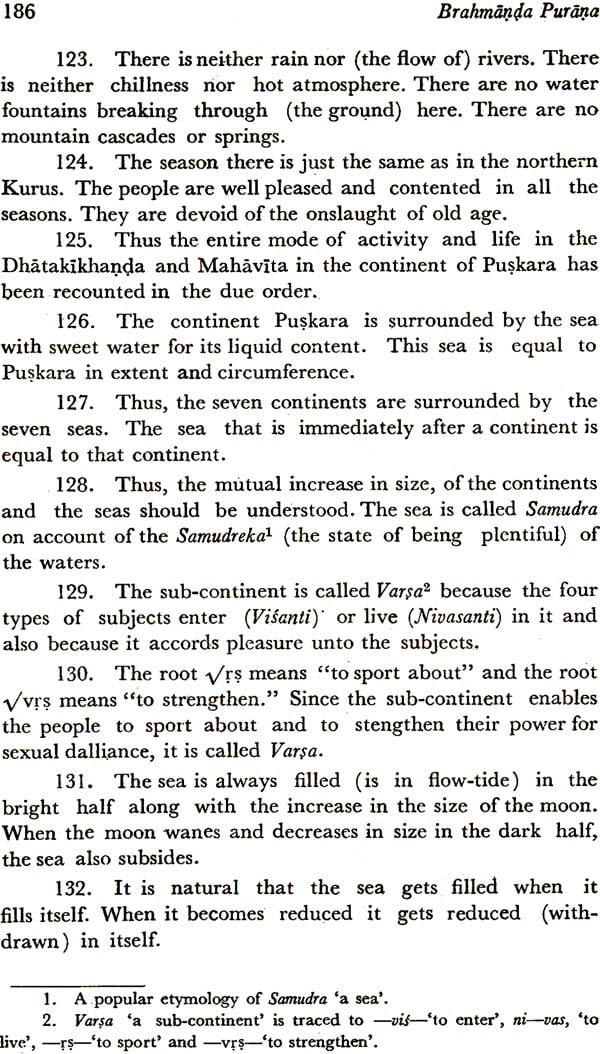
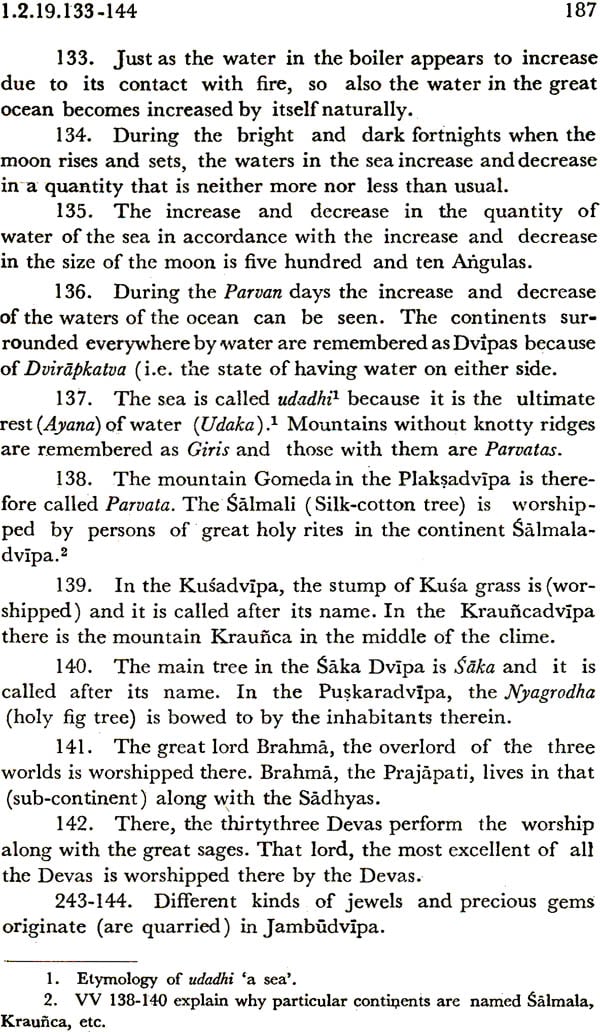
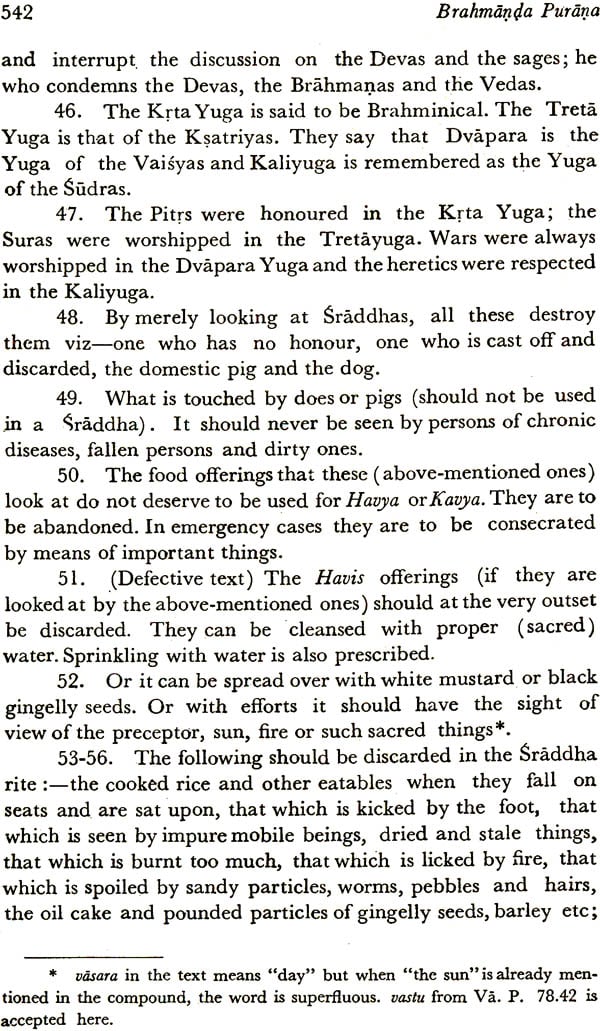

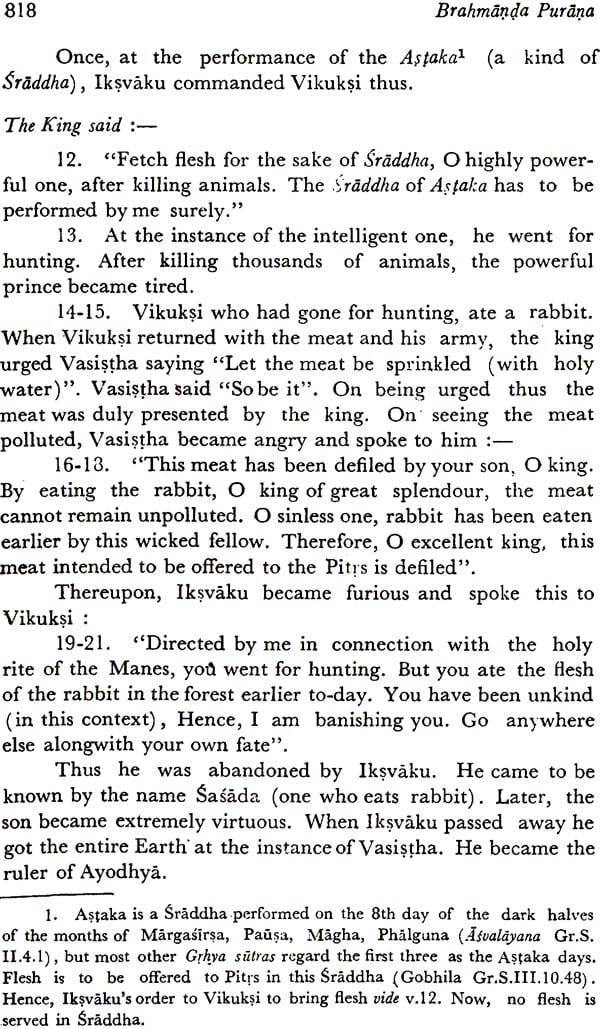
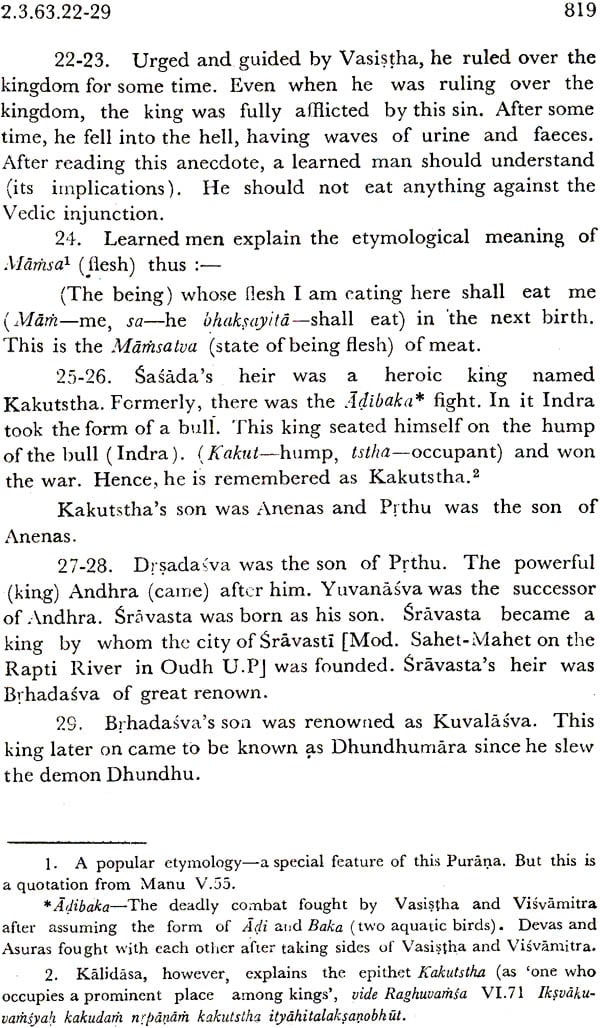
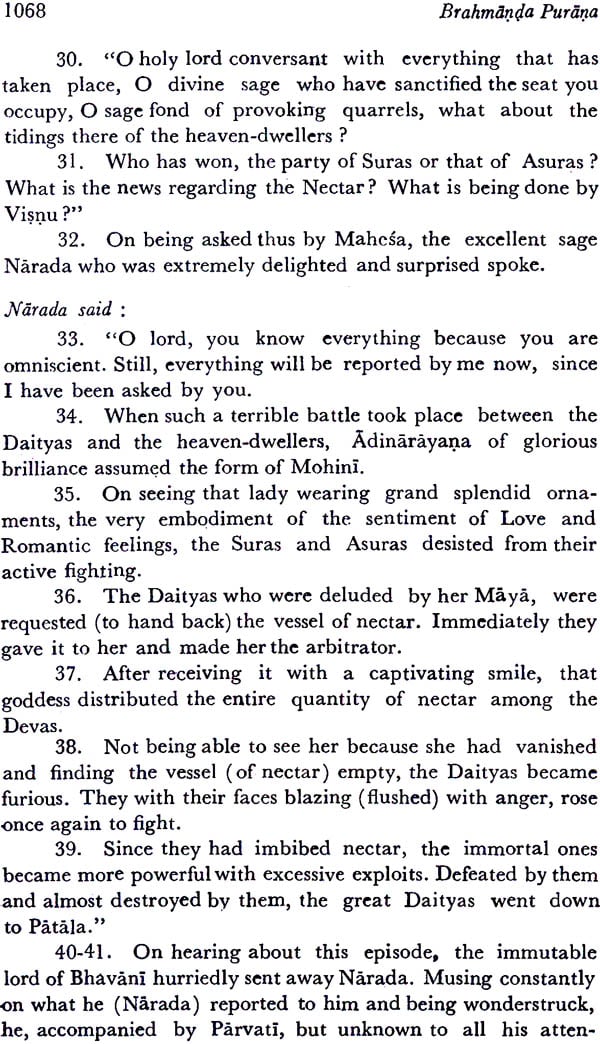
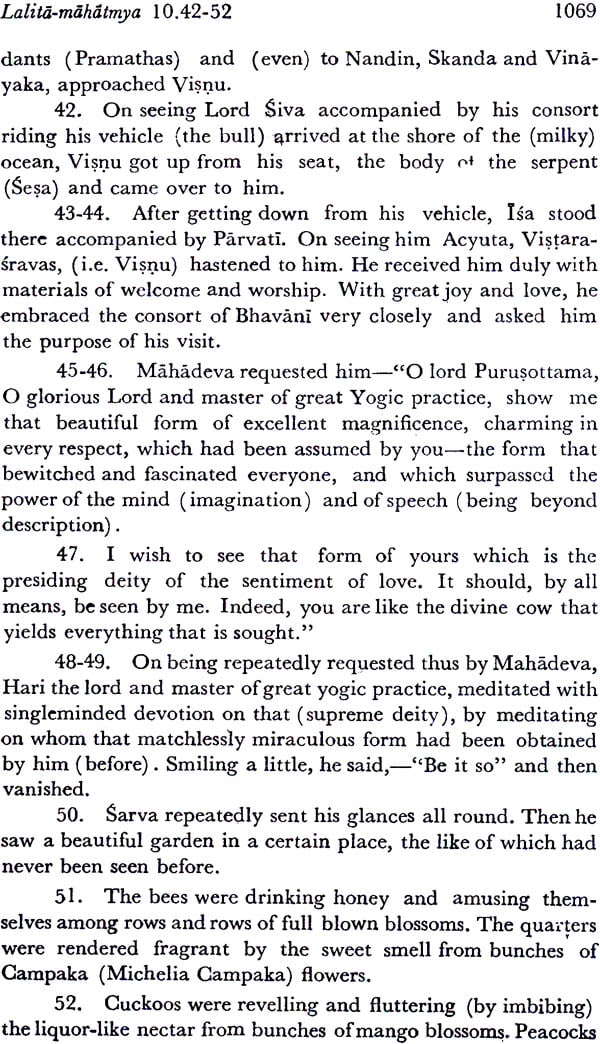
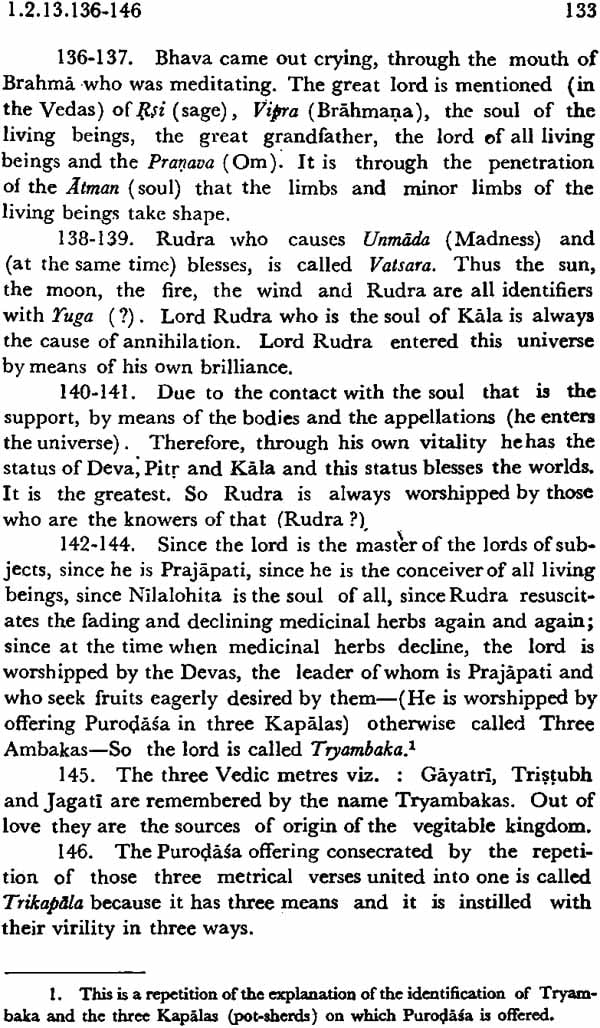
 to all international destinations within 3 to 5 days, fully insured.
to all international destinations within 3 to 5 days, fully insured.




